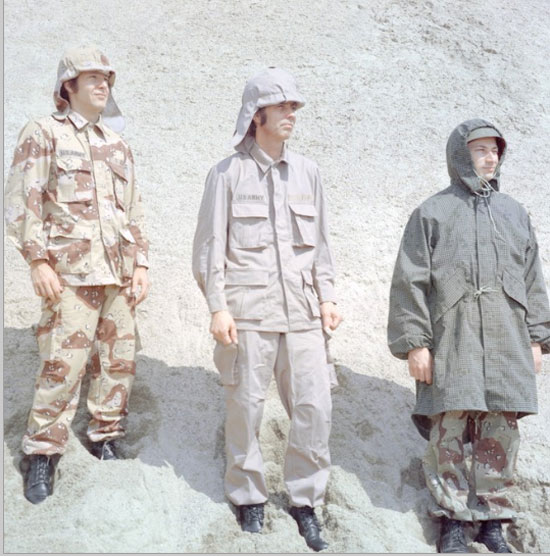
Photo: Digital Commonwealth of the Massachusetts Collections Online
Since its introduction in the middle of the 19th century various military forces have used neck curtains as a way to shield the harsh rays of the sun from a soldiers neck. First introduced in India circa 1842, the neck curtain – commonly dubbed a “Havelock” – was not limited to use in India, or even by the British military. The French Foreign Legion may be one of the best examples of a military to use the neck curtain – in part thanks to movies and books, which showed the Legion in North Africa with a kepi and havelock. However it seems that even in the recent past military planners have considered how these simple neck curtains could be incorporated with modern combat helmets. In the 1970s the American military tested some helmet covers that could be left unfolded in the back as a way of creating an ad hoc Havelock neck curtain.
As noted the “Havelock” neck curtain’s use with military helmets dates to the middle of the 19th century, when it was used by the British military in India. While its moniker now has the neck curtain forever tied to Major General Sir Henry Havelock KCB, my colleague Stuart Bates noted that it could be more correctly credited to Sir Henry Hardinge, the British Viceroy for India, who ordered white cap covers for tropical use, to which was added the first neck curtains.
The use of the Havelock continued with the British as well as with the French military, but in World War II the Japanese also utilized neck curtains with field caps, sun helmets and even in limited capacity with steel helmets. Later in the Vietnam War American soldiers would wear t-shirts or utilize other pieces of cloth to help cover their necks and upper back.
No doubt those later field attempts in Southeast Asia to create a neck curtain inspired American military planners to reconsider how a helmet cover system could also be used to shield a soldier’s neck.
Newly released from the Digital Commonwealth of the Massachusetts Collections Online show various attempts to create a neck curtain in the 1970s and 1980s, along with other tropical and specialty clothing for the U.S. military.
One of the images shows a desert uniform test that was conducted in 1972 with “Six Color Daytime Desert” and “Tan” uniforms – as well as a “Night Desert Parka.” As shown in this photo the M-1 steel helmet was issued with a specially modified helmet cover that features elongated rear flaps that provide additional shading to the head.
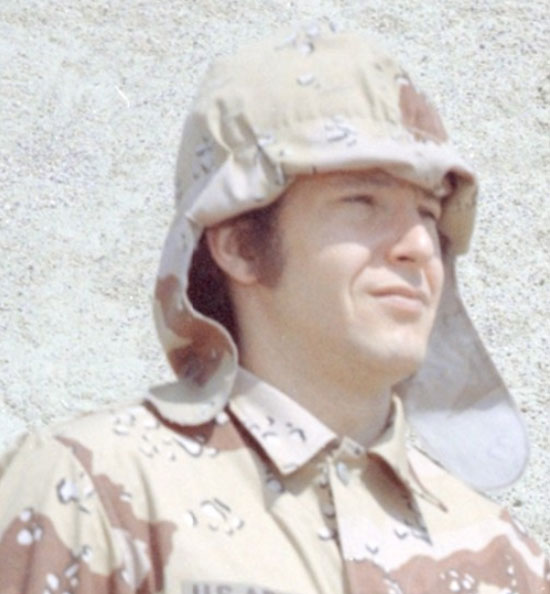
This soldier is wearing the Six Color Daytime Desert uniform – later dubbed the “Chocolate Chip” pattern. It was used during the Gulf War in 1991, but was soon removed from use with the U.S. military. The helmet covered in these tests was specially modified with elongated flaps at the rear. (Photo: Digital Commonwealth of the Massachusetts Collections Online)
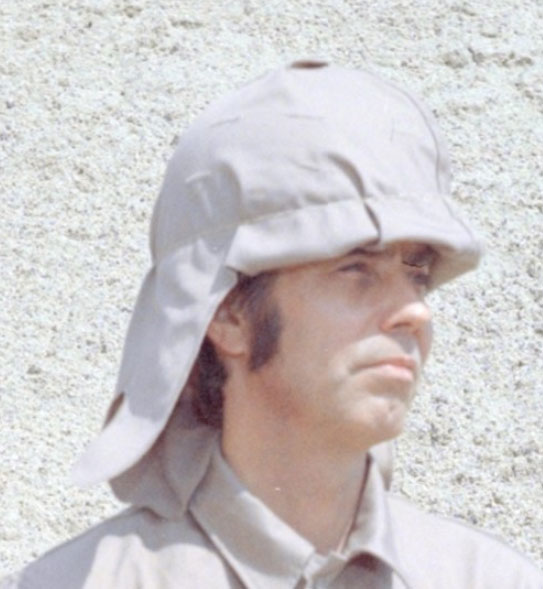
This “soldier” (more likely an employee of the clothing maker) wears a tan helmet cover over the M-1 helmet. The cover hides the shape of the helmet, and with his sideburns and longer hair, he could almost be mistaken for a solder in the 19th rather than 20th century! (Photo: Digital Commonwealth of the Massachusetts Collections Online)
Another later photo shows a test conducted in 1976 with another “Six Color Daytime Desert” uniform. This photo also shows a test helmet cover with elongated rear flaps both down and in the stored positions. This helmet cover was never fully produced for field use beyond the developmental testing phase.
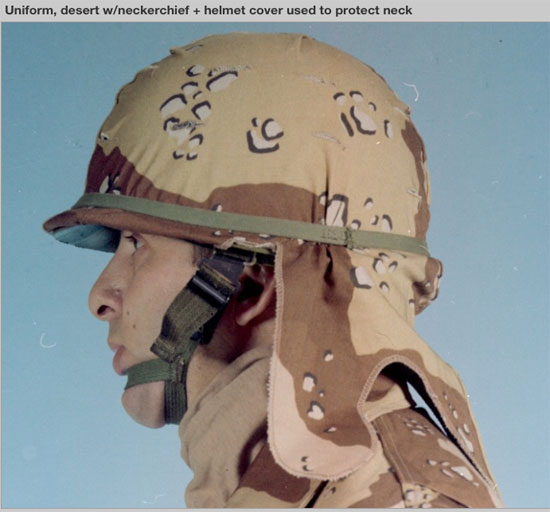
The caption of the photo describes the neck curtain as a “neckerchief” – but more importantly the photo shows the elongated flaps to the M-1 helmet cover. Taken in 1976 this photo shows the final years of the M-1 helmet, which was replaced by the PASGT (Personnel Armor System for Ground Troops) Kevlar helmet. (Photo: Digital Commonwealth of the Massachusetts Collections Online)
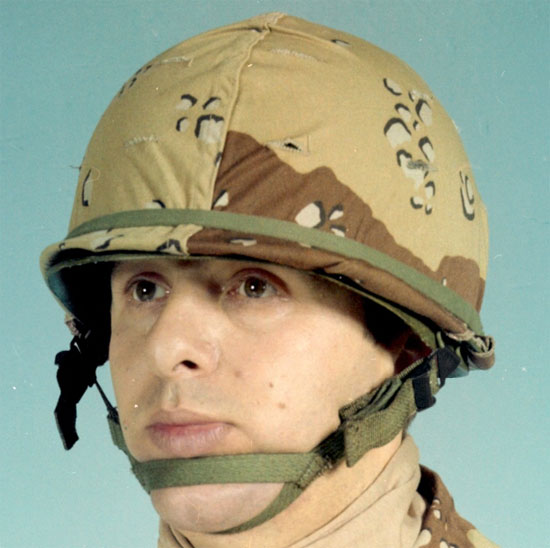
The cover with the rear flaps tucked in under the liner, which seems to be squeezed into the M-1 steel shell. No doubt the extra fabric made for a tight fit for the liner, and could have increased pressure on the chinstrap, which could be why the program was abandoned. (Photo: Digital Commonwealth of the Massachusetts Collections Online)
Apparently the tests for a neck curtain didn’t yield much beyond these limited prototypes, and it would seem that the U.S. Army sought not to continue to develop a neck curtain. One likely factor was that the M-1 helmet was soon replaced by the PASGT (Personnel Armor System for Ground Troops) helmet. While similar covers were utilized, it isn’t clear why efforts to create a neck curtain did not go forward.
Another factor could be that the covers looked somewhat sloppy, or that neck curtains could interfere with equipment or webbing, but no solid information is now available on the subject.
Regardless of the reason today we can only hope that those who serve in near and distant lands carry some sun block in their kit!
Special thanks to collector Bill Holland for sharing this information, and thanks to the Digital Commonwealth of the Massachusetts Collections Online.

Interesting article, I Was issued with an MTP sun hat before going on exercise to Cyprus with the RNR a couple of years back that came with a removable neck curtain, secured into the back with velcro. These were not popular and I don’t think I saw anyone actually wearing it. I did try mine, but the velcro stiffened the back of the crown slightly and was uncomfortable to wear- plus the brim of the cap was wide enough to protect most of my neck from the sun anyway.
It seems that informally, troops posted in the middle east often wear scrim scarfs for similar protection which do not require valcro or to be tucked in under the webbing.
This is probably the main reason none of these ideas have been forwarded.